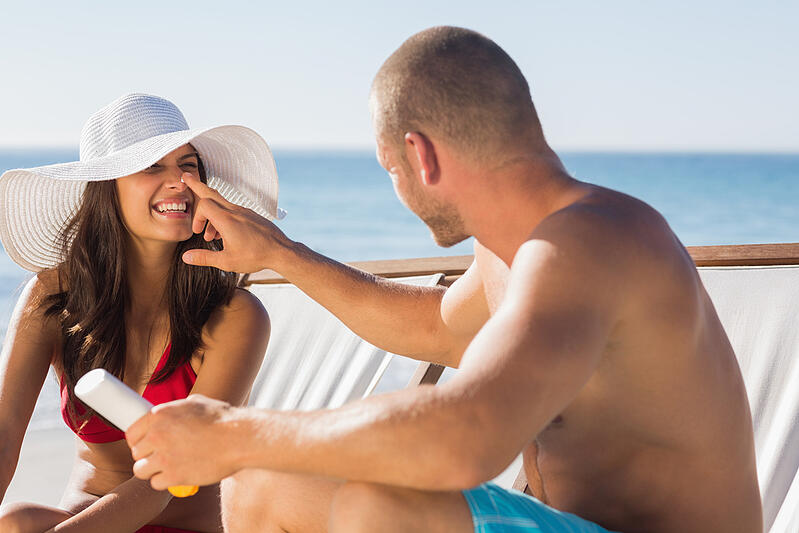
A precursor to not sleeping well at night can be rooted in anxiety or depression. With the summer still long from being over, it is important to get outdoors even if it is hard to beat the heat. Up to 20 minutes is all you need to recharge your batteries each day. Doctors recommend getting outside in the early morning hours; so, if you do battle the heat or humidity, the temps and levels will be lower.
The Sun: Nature’s Anti-Depressant
You or your child may be suffering from one of seasonal affective disorder (SAD). Both can hinder the ability to acclimate to a new schedule or a new routine when school starts next month.
Many attribute SAD to winter months but for those who suffer from depression or dislike a change in routine, SAD can affect any age during any season. The summer months can help parents determine if their child is in need of further help.
Taking the fun outdoors can help minimize the risk of SAD and help increase your body’s overall health. Decreasing your time outdoors in the natural sunlight drops your serotonin levels, which can cause SAD.
“The light-induced effects of serotonin are triggered by sunlight that goes in through the eye. Sunlight cues special areas in the retina, which triggers the release of serotonin.”
 “The light we get from being outside on a summer day can be a thousand times brighter than we’re ever likely to experience indoors,” says melatonin researcher Russel J. Reiter of the University of Texas Health Science Center.
“The light we get from being outside on a summer day can be a thousand times brighter than we’re ever likely to experience indoors,” says melatonin researcher Russel J. Reiter of the University of Texas Health Science Center.“For this reason, it’s important that people who work indoors get outside periodically, and moreover that we all try to sleep in total darkness. This can have a major impact on melatonin rhythms and can result in improvements in mood, energy, and sleep quality.”
Sunshine: The Melatonin Maker
Natural sunlight in the morning is also known to help nocturnal melatonin production to occur sooner that helps ease you into a blissful sleep. Normally produced during the day, serotonin is only converted to melatonin in darkness.
High melatonin levels correspond to long nights and short days, while high serotonin levels in the presence of melatonin reflect short nights and long days. Higher serotonin levels result in more positive moods and calmer mental health helping you sleep better.
Check out this chart below from Tuck. Notice the curve of the chart for a good night’s rest looks like the sun rising to the sun setting.
“After sunset, our bodies begin to cool, kicking off melatonin production and preparing for sleep. Melatonin is the hormone that regulates your sleep. Around sunrise, they do the opposite, decreasing melatonin and increasing our core body temperature.”

Turn Exercise Into a Great Night of Sleep
Exercising in the sunlight not only reduces stress but physical activity improves sleep quality and increases sleep duration keeping one in deep sleep longer. According to Sleep Doctor, increased deep sleep boosts the immune system, supports cardiac health, and helps control anxiety.
Early morning and afternoon exercise may also help reset the sleep wake cycle by raising body temperature slightly, then allowing it to drop and trigger sleepiness a few hours later. Try 30 minutes every morning and journal how you feel at bedtime with this routine change.
A word of caution as you switch up your indoor and outdoor ratio: make certain to protect your skin with sunscreen. Dependent on your region, UV rays will emit different levels of sun to your skin.
It is safe to say fair-toned skin will burn more easily than darker skin individuals. Be cautious during the 10 a.m. to 4 p.m. window reapplying sunscreen and wearing SPF clothing when active outdoors. Only 5 to 15 minutes of sunlight benefits your vitamin-D boost.
A hat, sunglasses, and staying hydrated also benefit your increase in sunshine. Hydration keeps your body balanced all day with releasing unwanted chemicals through urinating throughout the day as opposed to drinking close to bedtime.
Another important tip for sun exposure: do not stare directly at the sun, but allow your face to absorb the sunlight for 15 minutes without sunglasses. If you plan to go for a longer walk, hike, kayak, or run, take off the sunnies for a bit so your eyes absorb the sun’s nutrients.
For an extra boost of Vitamin D, you can try eating more oily fish or through dairy products. Supplements are also an option to build stronger bones and help increase your success sleeping at night.
Your Indoor Sunshine Fix
Light Box Therapy, or phototherapy, may be a solution as well, especially those experiencing zero sunlight in the winter. With the use of a box or light therapy glasses, the design produces a soft light of 10,000 lux to affect the circadian rhythm for wakefulness and sleep.
The sunshine is the best medicine producing more than 10,000 lux when you expose your face to sunlight for 15 minutes each day, but photo-therapy can also help those who experience little sunshine in their region.

Various disorders can disrupt this alignment and may be effectively treated with light box therapy, including:
Advanced Sleep Phase Syndrome
Delayed Sleep Phase Syndrome
Jet Lag
Shift-Work Sleep Disorder
Irregular Sleep-Wake Rhythm
The timing of treatment may vary with each condition. For example, night owls may benefit most from light exposure in the morning, while those with advanced sleep phase syndrome may conversely need the photo-therapy at night.
This therapy could also help to reduce SAD symptoms when used in the morning to reset your biological clock. Ask your physician if a light box therapy is the right treatment.
Depression is often linked to sleep disorders, we want to help you get the best treatment for your disorder. If you think you, or a loved one, may have seasonal affective disorder, simply contact The Alaska Sleep Clinic for any of your sleep related needs, and get started on your way to a happier, healthier summer life.
Watch “Moms” Episodes












